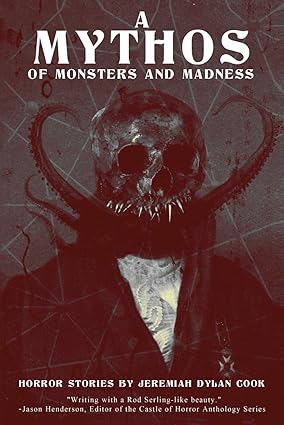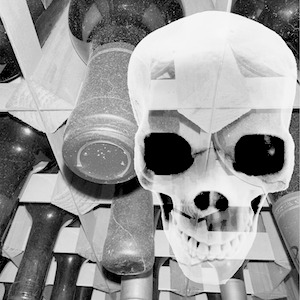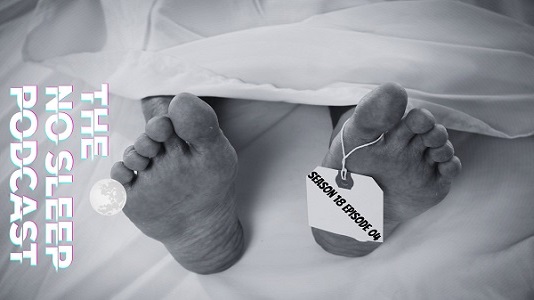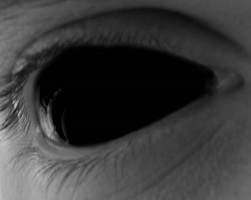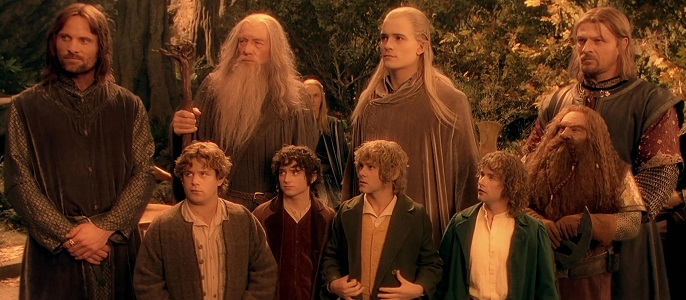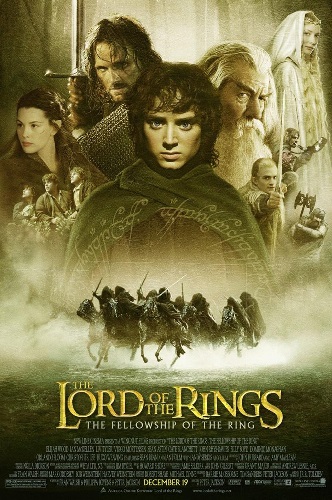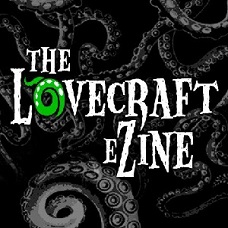
While I was on paternity leave, I accomplished very little aside from bonding with my newborn daughter. I’m not complaining. It was great. One of the few things I did accomplish was reading John Langan’s two newest releases. Mr. Gaunt and Other Uneasy Encounters is a 2022 reprint of Langan’s debut collection from 2008, while Corpsemouth and Other Autobiographies is his newest collection. After finishing these two works, I wanted to celebrate the fact that I’ve now read all Langan’s released novels and collections. I’ve previously reviewed The Wide Carnivorous Sky, The Fisherman, House of Windows, and Sefira, but I didn’t want to do another five-paragraph review. Instead, I decided to categorize his work according to my own observations. I felt that Langan’s work deserved this kind of analysis, and I hope others will be inclined to expand on what I’ve started here. If you’re reading this and wondering if I’m a crazy person for doing this, I am, but why don’t you judge me after you’ve reviewed what I’ve written below.
Note: If you’re confused by my categories, I define them at the end of this post. Additionally, some of my notes and categories may contain spoilers. Lastly, John Langan’s Story Notes in the back of his collections contain far more information than what I listed below, so I recommend checking those out if you like this post.
Mr. Gaunt and Other Uneasy Encounters 2008 (2022 Reprint)
On Skua Island – Scottish Myth/Ancestry/Setting
-
-
- Note: This story is about a mummy.
-
Mr. Gaunt – Scottish Myth/Ancestry/Setting + Fatherhood
-
-
- Mythos Note: The character of George Farage is an occultist who reappears in Langan’s short story, “The Supplement.” The protagonist, Henry Farage, is also heavily implied to appear in “The Supplement” as George’s new assistant.
-
Tutorial – Art/Writing Reflection
Episode Seven: Last Stand Against the Pack in the Kingdom of the Purple Flowers – Apocalyptic + Parenthood
-
-
- Mythos Note: It’s possible that Langan’s apocalyptic stories are connected and occurring during the same apocalypse. Other stories Langan has written on apocalypses are “The Shallows,” and “Inundation.”
- Easter Egg: One of the protagonist’s names is Wayne, and he wears a Batman t-shirt.
-
Laocoon, or The Singularity – Art/Writing Reflection + Horrible Transformation + Fatherhood
-
-
- Mythos Note: This story contains some thematic similarities with “The Communion of Saints.”
-
Tethered – Ghost Story
-
-
- Note: Original to 2022 Reprint
-
House of Windows 2009 – Ghost Story + Fatherhood + Occult
-
-
- Mythos Note: Papers belonging to the protagonist of this book reappear in “The Supplement.”
-
The Wide Carnivorous Sky and Other Monstrous Geographies 2013
Kids – Teaching + Zombie
How the Day Runs Down – Apocalyptic + Zombie
Technicolor – Teaching + Occult
-
-
- Note: This story fictionalizes elements of the life of Edgar Allan Poe.
-
The Wide, Carnivorous Sky – Vampire + Military
City of the Dog – Lovecraftian
-
-
- Note: This story features Lovecraft’s ghouls from “Pickman’s Model.”
-
The Shallows – Lovecraftian + Fatherhood
-
-
- Mythos Note: It’s possible that Langan’s apocalyptic stories are connected and occurring during the same apocalypse. Other stories Langan has written on apocalypses are “Episode Seven: Last Stand Against the Pack in the Kingdom of the Purple Flowers,” and “Inundation.”
-
The Revel – Monster + Experimental
-
-
- Note: This story examines the tropes associated with werewolf fiction.
-
June, 1987. Hitchhiking. Mr. Norris. – Laird Barron + Occult
-
-
- Note: The protagonist of this story is the author Laird Barron.
-
Mother of Stone – Exorcism
-
-
- Mythos Note: The statue at the heart of Mother of Stone reappears briefly in The Fisherman. It’s implied that the titular Fisherman was responsible for the stone’s appearance in upstate New York.
-
The Fisherman 2016 – Occult + Lovecraftian + Fatherhood
-
-
- Mythos Note: The characters of Rainer and Wilhelm Vanderwort venture to a magic city on a black ocean patrolled by bird-like figures. This city and its inhabitants reappear in “Outside the House, Watching for the Crows,” and “Shadow and Thirst.”
- Mythos Note: Late in the novel, the protagonist, Abe, encounters the statue from “Mother of Stone.”
-
Sefira and Other Betrayals 2019
Sefira – Monster + Occult
-
-
- Mythos Note: The Black Guide, a fictional Atlas Obscura that John Langan, Paul Tremblay, and Laird Barron share, appears in this story as blackguide.com.
- Mythos Note: The character of Madame Sosostris reappears in “Natalya, Queen of the Hungry Dogs,” found in Echoes: The Saga Anthology of Ghost Stories edited by Ellen Datlow.
- Mythos Note: The character of George Farange is referenced by Madame Sosostris.
- Note: This story is about a Succubus.
-
In Paris, In the Mouth of Kronos – Military + Monster
The Third Always Beside You – Parents + Ghost Story
The Unbearable Proximity of Mr. Dunn’s Balloons – Victorian Era + Occult + Monster
Bloom – Horrible Transformation
Renfrew’s Course – Scottish Myth/Ancestry/Setting + Occult
Bor Urus – Monster + Mid-Life Crisis + Fatherhood
-
-
- Mythos Note: Protagonist visits the shore of the Black Ocean from The Fisherman.
-
At Home in the House of the Devil – Occult + Monster
-
-
- Note: As the name implies this story concerns the devil.
-
Children of the Fang and Other Genealogies 2020
Sweetums – King in Yellow
Hyphae – Fatherhood + Horrible Transformation
Muse – Meta
-
-
- Note: This story is a fictional letter to Paul Tremblay about Stephen Graham Jones. Laird Barron is mentioned.
-
Zombies in Marysville – Zombie + Meta + Fatherhood
With Max Barry in the Nearer Precincts – Afterlife
Into the Darkness Fearlessly – Vengeance + Art/Writing Reflection
Children of the Fang – Lovecraftian
-
-
- Note: This story features the lizard creatures from H.P. Lovecraft’s “The Nameless City.”
- Mythos Note: Detective Calasso appears (also appears in City of the Dog and Communion of Saints).
-
Episode Three: On the Great Plains, In the Snow – Ghost Story
Tragoidia – Rebirth + Occult
-
-
- Mythos Note: Pan is discussed. Pan appears in Langan’s uncollected short story “Haak,” found in The Best Horror of the Year Volume Eleven edited by Ellen Datlow.
-
Ymir – Military + Monster + Laird Barron
-
-
- Note: This story takes place in Laird Barron’s Old Leech Mythos.
-
Irezumi – Cyberpunk
The Horn of the World’s Ending – Lovecraftian + Scottish Myth/Setting/Ancestry
-
-
- Note: This story features the Black Goat of the Wood’s Dark Young from H.P. Lovecraft’s Cthulhu Mythos.
-
The Underground Economy – Occult + Strip Club Setting
The Communion of Saints – Occult
-
-
- Mythos Note: Detective Calasso reappears.
- Note: This story contains some thematic similarities with “Laocoon, or The Singularity.”
-
Aphanisis – Sword and Sorcery + Experimental
-
-
- Note: The story concerns killing off different versions of yourself, and this subject reappears in “Shadow and Thirst.”
-
Gripped – Strip Club Setting + King in Yellow
-
-
- Note: The protagonist of this story is author Joe Pulver. Pulver is also the protagonist in Langan’s uncollected short story “Helioforge.”
-
Inundation – Apocalyptic + Monster
-
-
- Mythos Note: It’s possible that Langan’s apocalyptic stories are connected and occurring during the same apocalypse. Other stories Langan has written on apocalypses are “The Shallows,” and “Episode Seven: Last Stand Against the Pack in the Kingdom of the Purple Flowers.”
-
To See, To Be Seen – Occult
-
-
- Mythos Note: An occult group called The Friends of Borges appear. They also appear in “What is Lost, What is Given Away.”
-
What You, Do Not Bring Forth – Art/Writing Reflection + Dreams
Vista – Art/Writing Reflection + Experimental
Slippage – Laird Barron + Art/Writing Reflection + Meta
-
-
- Note: This story is a fictional account of a drive Langan took with Laird Barron. This story ending this collection mirrors Laird’s story “More Dark” (also a Meta fictionalized tale about writers) ending Barron’s short story collection The Beautiful Thing That Awaits Us All.
-
Corpsemouth and Other Autobiographies 2022
Kore – Halloween
Homemade Monsters – Childhood Reflection + Monster
The Open Mouth of Charybdis – Lovecraftian + Childhood Reflection
-
-
- Note: This story is connected to H.P. Lovecraft’s “The Shadow over Innsmouth.”
-
Shadow and Thirst – Vampire + Fatherhood
-
-
- Mythos Note: The creature in this story is a banished member of the bird-like figures who are mentioned in The Fisherman and who appear in “Outside the House, Watching for the Crows.”
- Note: The story concerns killing off different versions of yourself, and this subject reappears in “Aphanisis.”
-
Corpsemouth – Afterlife + Fatherhood + Monster + Scottish Myth/Setting/Ancestry
-
-
- Mythos Note: Weapons that keep Corpsemouth at bay are rumored to be inscribed with letters taken from city by the black ocean from The Fisherman and “Outside the House, Watching for the Crows.”
-
Anchor – Laird Barron + Monster + Writing/Art Reflection + Fatherhood
Outside the House, Watching for the Crows – Childhood Reflection + Monster
-
-
- Mythos Note: The bird-like figures in this story are mentioned in The Fisherman and a banished member of their group appears in “Shadow and Thirst.”
-
What is Lost, What is Given Away – Childhood Reflection + Occult
-
-
- Mythos Note: An occult group called The Friends of Borges appear. They also appear in “To See, To Be Seen.”
-
The Supplement – Occult
-
-
- Mythos Note: George Farage originally appears in “Mr. Gaunt.” George Farage’s assistant is heavily implied to be the protagonist of “Mr. Gaunt.” Papers mentioned in this story belong to Roger Croydon from House of Windows.
-
Mirror Fishing – Occult + Lovecraftian + Scottish Myth/Setting/Ancestry
Caoineadh – Monster + Scottish Myth/Setting/Ancestry
Definition of Terms:
Apocalyptic: This story occurs during the end of the world.
Childhood Reflection: This story had a character reflecting on their childhood.
Exorcism: This story is about an exorcism.
Experimental: This story plays with the form of telling a story in a novel way.
Fatherhood: The story deals with fatherhood as a central theme.
Ghost Story: This story is about ghosts. Boo.
Halloween: This story concerns the spooky high holiday.
Horrible Transformation: This story contains a character going through a horrible bodily transformation.
King in Yellow: Have you seen the Yellow Sign?
Laird Barron: This story contains elements from Laird Barron’s works or refers to Laird Barron.
Lovecraftian: This story concerns elements derived from Lovecraft’s fiction or a sense of cosmic horror.
Meta: Fiction about real life authors.
Monster: This story contains a supernatural creature. While I was tempted to create a new category for every monster I could identify, I decided to only do it for those who appear in multiple tales.
Occult: This story contains elements of occult magic, grimoires, cultists, or some combination of those elements.
Parenthood: This story deals with parenthood, not just being a father, as a central theme.
Scottish Myth/Ancestry/Setting: The story either deals with Scottish Myth, Scottish Ancestry, or has a Scottish Setting.
Strip Club Setting: This story takes place at a Strip Club.
Teaching: This story is about the profession of being a teacher.
Vampire: This story is about vampires or creatures that can be perceived as vampiric.
Vengeance: This story concerns getting vengeance.
Victorian Era: This story occurs during the Victorian Era.
Writing/Art Reflection: The story focuses on the creation of art or art’s impact on viewers and readers.
Zombie: This story has zombies in it.




